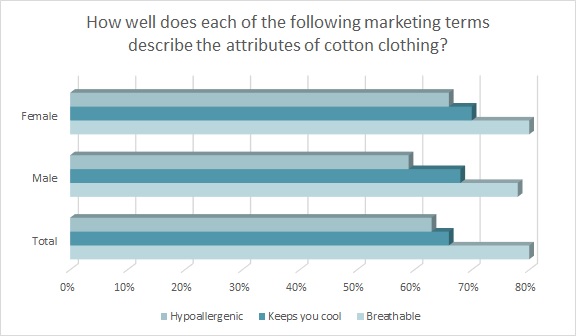Two seemingly dichotomous trends are taking place this season: the “coastal grandmother” and “feral girl summer.” Sure, they may both sound odd as far as trends go. But this is the age of TikTok and an incessant pandemic, so here we are. And any brand or retailer that dismisses these as made up phrases risks leaving money on the table seeing as these trends come replete with style choices.
The coastal grandma aesthetic is the perfect combination of style and comfort, so it makes sense that it is big trend for the summer. Comfort and ease in clothing has become a priority rather than a luxury for women.”
Saima Chowdhury
Founder & CEO, Grey State
For anyone who’s been busy living their lives trying to avoid Covid and has missed the details on these movements, here’s the skinny. The coastal grandmother is about heirloom tomatoes and going to bed early. She appreciates the finer things in life and is all about being effortlessly stylish. Interestingly, she can be any age. After all, the phrase was coined by a 26-year-old TikTok user. The look includes cozy cardigans, button-front shirts, and breezy, wide-leg pants.
Meanwhile, the feral girl is “the wild child that lives inside all of us.” Feral girls are a sort of backlash to the “that girl” and “hot girl summer” trends, where women leaned into waking at 5 a.m., exercising and girl bossing. Feral girls are about living in soft pants and crop tops, partying when and how they want, and sleeping in. Of note: both trends put an emphasis on comfortable clothes and fabrics.
Of course, these aren’t the only two fashion trends happening this summer. But as Grey State apparel’s Saima Chowdhury, founder and CEO of the sustainable brand, says, the pandemic showed consumers the value of clothing that has a relaxed ease about them.
“As we go back to the world, we want to look good but do not want to give up the comfort,” Chowdhury says in an interview with the Lifestyle Monitor™. “The coastal grandma aesthetic is the perfect combination of style and comfort, so it makes sense that it is big trend for the summer. Comfort and ease in clothing has become a priority rather than a luxury for women.”
Aisha Rawji, founder and CEO of the LA-based Kynah and Kiska Studios retail and apparel brands, says that with summer here, it’s important for consumers to make smart fabric choices that they can rely on as the temperature rises.
“Cotton works so well for summer clothes naturally because it’s so breathable,” Rawji says in an interview with the Lifestyle Monitor™. “Unlike with nylon or polyester, air can pass through cotton with ease, which will make you cooler and more comfortable in hot and humid climates.”
Compared to manmade fiber clothing, more than 7 in 10 consumers say cotton apparel is their favorite to wear (85 percent), most comfortable (84 percent), softest (84 percent), most sustainable (76 percent), and highest quality (71 percent), according to the 2021 and 2022 Cotton Incorporated Lifestyle Monitor™ Survey.
The benefits of offering cotton in the summer months are clear, especially since the majority of consumers describe it as breathable (80 percent), keeps you cool (66 percent), and hypoallergenic (63 percent), according to the Monitor™ research.

“Cotton pieces will never go out of style because people love to feel fresh air on their skin, especially with the sun shining down,” Rawji says in an interview with the Monitor™. “With current trends like midi dresses, coastal looks and flowy shirts, cotton is the best option to stay breezy. Cotton also keeps the sun and moisture off your skin and is the best fabric to travel in. Cotton is also sustainable, both for consumers and the planet, which is something we pride ourselves on here at Kiska.”
Notably, most apparel customers are also willing to pay a slightly higher price to keep cotton from being substituted in their clothing, especially in their intimates (63 percent), T-shirts (60 percent), casual clothes (56 percent), denim jeans (54 percent), children’s wear (51 percent), and activewear (51 percent), according to the Monitor™ research.
Consumers who are willing to pay more to keep their apparel cotton-rich say it’s because cotton is more comfortable (49 percent), lasts longer (35 percent), and it’s more natural/environmentally friendly (14 percent), according to the Monitor™ research.
Grey State Apparel’s offering, the majority of which is cotton rich, includes tops, bottoms, sweaters, sweatshirts, and dresses. Chowdhury says she founded the brand with the goal of making women’s lives easier, by making “what to wear” an easier question to answer. The brand also specifically uses U.S.-grown cotton, because “we believe that truly great fashion starts with truly great materials.
“The rising demand for versatile wardrobe staples that are gentle on the skin hasn’t erased the consumer’s desire for those same pieces to be just as gentle on the environment,” Chowdhury says in an interview with the Monitor™. “Shoppers want pieces that are comfortable, but they also want to know that their purchases support best practices for sustainable manufacturing. U.S. grown cotton is an ideal choice for garments that meet the consumer’s need for fabrics that are dependable, simple to care for and ethically sourced. Not only is USA cotton of superior quality and durability, but it’s made with industry leading standards of sustainability.”
Cotton can be found in many of the other summer style trends, which include matching sets, corsets (including denim), crochet pieces, and cutouts on everything from tops to bottoms to dresses. Chowdhury adds that Grey State is seeing a “horticool” trend, which is focused on raw natural fabrics.
“We are focusing on natural mineral dyes for cotton and undyed fabrics, to get closer to nature and reduce our carbon footprint,” Chowdhury says in an interview with the Monitor™. “We’re always looking for new ways to make our garments more sustainable so you can feel great about putting them on again and again.”
